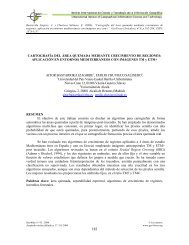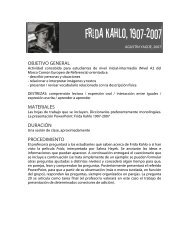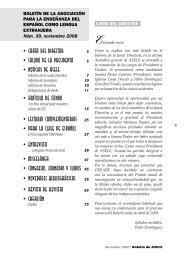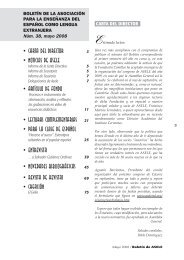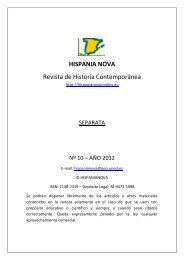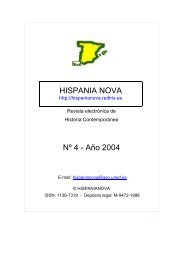Preparing an IPv6 Addressing Plan Manual - RedIRIS
Preparing an IPv6 Addressing Plan Manual - RedIRIS
Preparing an IPv6 Addressing Plan Manual - RedIRIS
- No tags were found...
You also want an ePaper? Increase the reach of your titles
YUMPU automatically turns print PDFs into web optimized ePapers that Google loves.
The present chapter will describe the possible addressing pl<strong>an</strong>s, using the followingexample network:4.2Basic Structure of the <strong>Addressing</strong> Pl<strong>an</strong>With the <strong>IPv6</strong> protocol, there are so m<strong>an</strong>y available addresses that we c<strong>an</strong> createone or more primary subnets. We c<strong>an</strong>, for example, assign the addresses per usetype or per location, or use combinations. For example, we may assign the addressesfirst by use type <strong>an</strong>d then by location. Once these subnets have been defined, therewill still be bits remaining that c<strong>an</strong> be assigned to <strong>an</strong>other purpose.Take the example in section 2.4:2001:db8:1234: L L L L G G G G B B B B B B B B ::/64In this example, 4 bits are assigned to a location (L) <strong>an</strong>d 4 bits are assigned to a usetype (G). As a result, there are 8 bits remaining (B). Following this addressing pl<strong>an</strong>,16 1 locations c<strong>an</strong> be addressed, with each location having 16 2 allocatable use types.Each of these locations c<strong>an</strong> create 256 3 networks per use type.4.3Defining a Primary SubnetWe first need to decide on the addressing of the primary subnets. We recommendchoosing the location or the use type (such as students, staff, servers, switches,routers, public, etc.) as the primary subnet. These options are discussed below.4.3.1LocationWhen the location is the primary subnet, each building, department etc. is assigned <strong>an</strong>umber of dedicated addresses. The emphasis in this case lies on optimisation of therouting tables. All the networks within a single location will be aggregated to a singleroute in the routing table, so that the routing table will remain compact.1Number of possible combinations of the 4 location bits2Number of possible combinations of the 4 use type bits3Number of possible combinations of the 8 assignable bits9<strong>Preparing</strong> <strong>an</strong> <strong>IPv6</strong> <strong>Addressing</strong> Pl<strong>an</strong>




